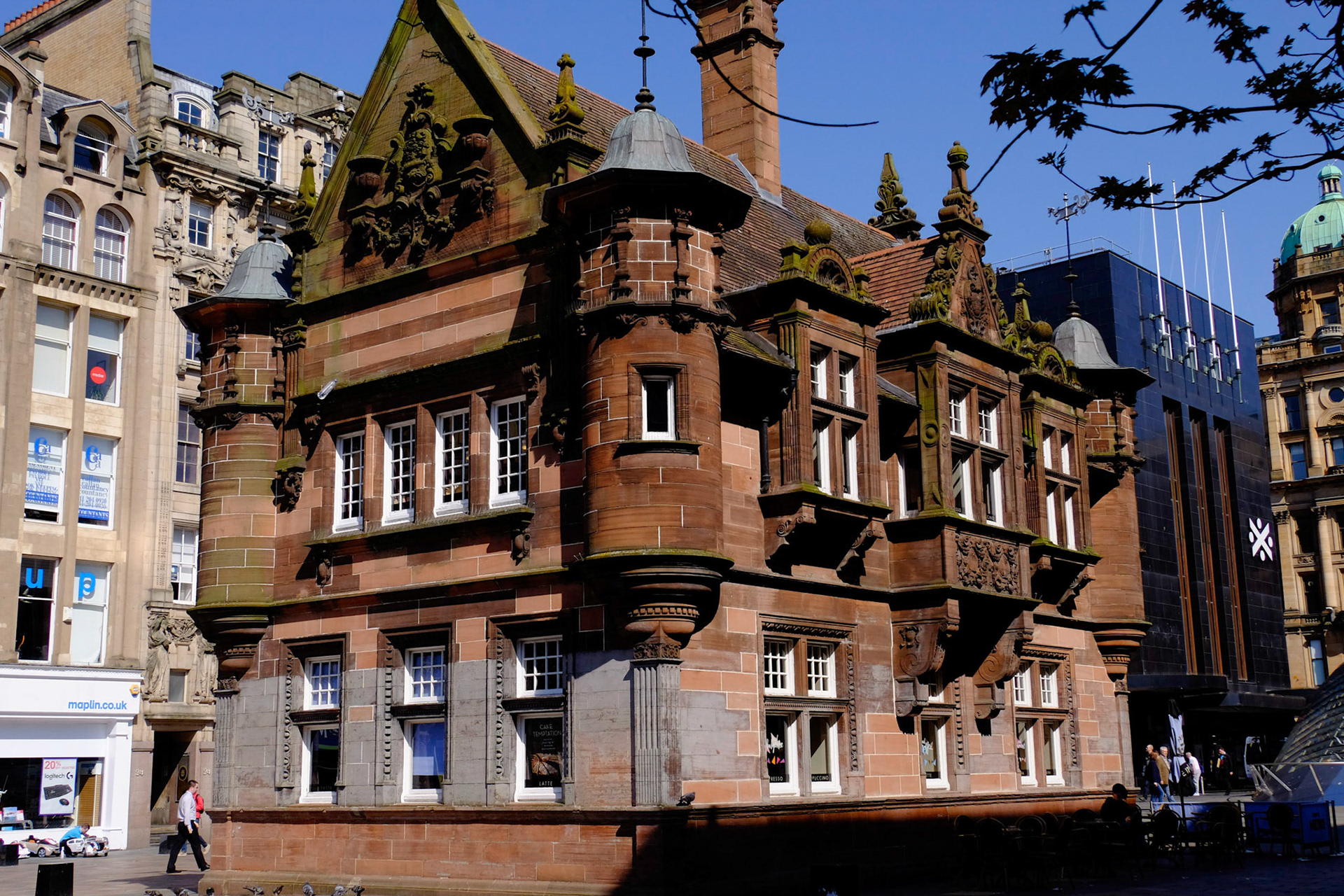From his earliest work as an employee of the Caledonian Railway Company, James Miller had a considerable influence on the look of Scotland's railway buildings. As well as designing most of the stations on the world-famous West Highland line, Miller also worked on improvements to Glasgow Central station, designed the delightful little St. Enoch Subway station and created his railway masterpiece, the glorious Wemyss Bay station on the Clyde Coast
St Enoch Subway Station
Although Miller's railway work was almost exclusively for railways on the main network, the exception was St Enoch Subway Station (1896, ‘A’ listed). A delightful little Jacobean style building of red sandstone built as both a subway station and the head office of the Glasgow District Subway Company, the builders of the third oldest subway in the world. During major refurbishment of the subway in 1977 St Enoch's was propped up on jacks allowing the work on the tunnels and new station construction to take place below. The building subsequently became a travel centre and is now a coffee shop.
St Enoch Subway station






Botanic Gardens Station
Botanic Gardens Station on Great Western Road at the top of Byres Road was opened by the Glasgow Central Railway in August 1896, with the railway located underground in the gardens themselves. The construction was of red brick and was decorated with domed towers giving it a Kremlin like appearance.
The station closed to passengers in 1939 and the line, a victim of the Beeching cuts closed in 1964. After closure as a railway station the building was converted into shops including the popular Silver Slipper Cafe. Botanic Gardens Station was demolished in 1970 following a fire.
Botanic Gardens station
Wemyss Bay Railway Station
One of James Miller’s most beautiful buildings, Wemyss Bay Railway Station (1902-1904, ‘A’ listed) designed for the Caledonian Railway, the magnificent glass and steel structure spanning the circular booking office and pier walkway, topped by the sixty-foot Queen Anne style clock tower still has the power to impress nearly 100 years on.
Replacing an existing two platform station building, inadequate to handle the increase in Clyde Coast holiday traffic, Miller’s station and the adjoining pier were built on land reclaimed from the sea. The station became one of the showpieces of Scottish railways and in the golden age of Clyde holidays had some xxx passengers.
Vintage postcard views of Wemyss Bay station


Bridge Street station, Laurieston
James Miller’s first work (with George Graham) as an employee of the Caledonian Railway Company was Bridge Street station (1890, ‘B’ listed) in the Laurieston area south of the Clyde. This 18 bay sandstone building of four storeys and attics replaced the original station building of 1841.
Housing, commercial and industrial premises and the nearby docks made the Laurieston of the day a busy area and provided large passenger numbers for Bridge Street station but reconstruction of Central Station and its approaches led to the closure of Bridge Street, with the last passenger service in March 1905. Miller’s facade survives and now contains flats and shops.
Bridge Street Station
Bridge Street Station
Greenock Princes Pier railway station
In 1872 The Greenock and Ayrshire Railway was absorbed by Glasgow and South Western Railway. Greenock Albert Harbour station was renamed Greenock Princes Pier in 1875 and a much grander station designed by Miller was built 100 yards to the north in 1894. Regular passenger services to Greenock Princes Pier from Kilmacolm ended on 2nd February 1959 but was used by boat trains until 30th November 1965. The station was closed to freight on 29th September 1966. The station was demolished in 1967.
